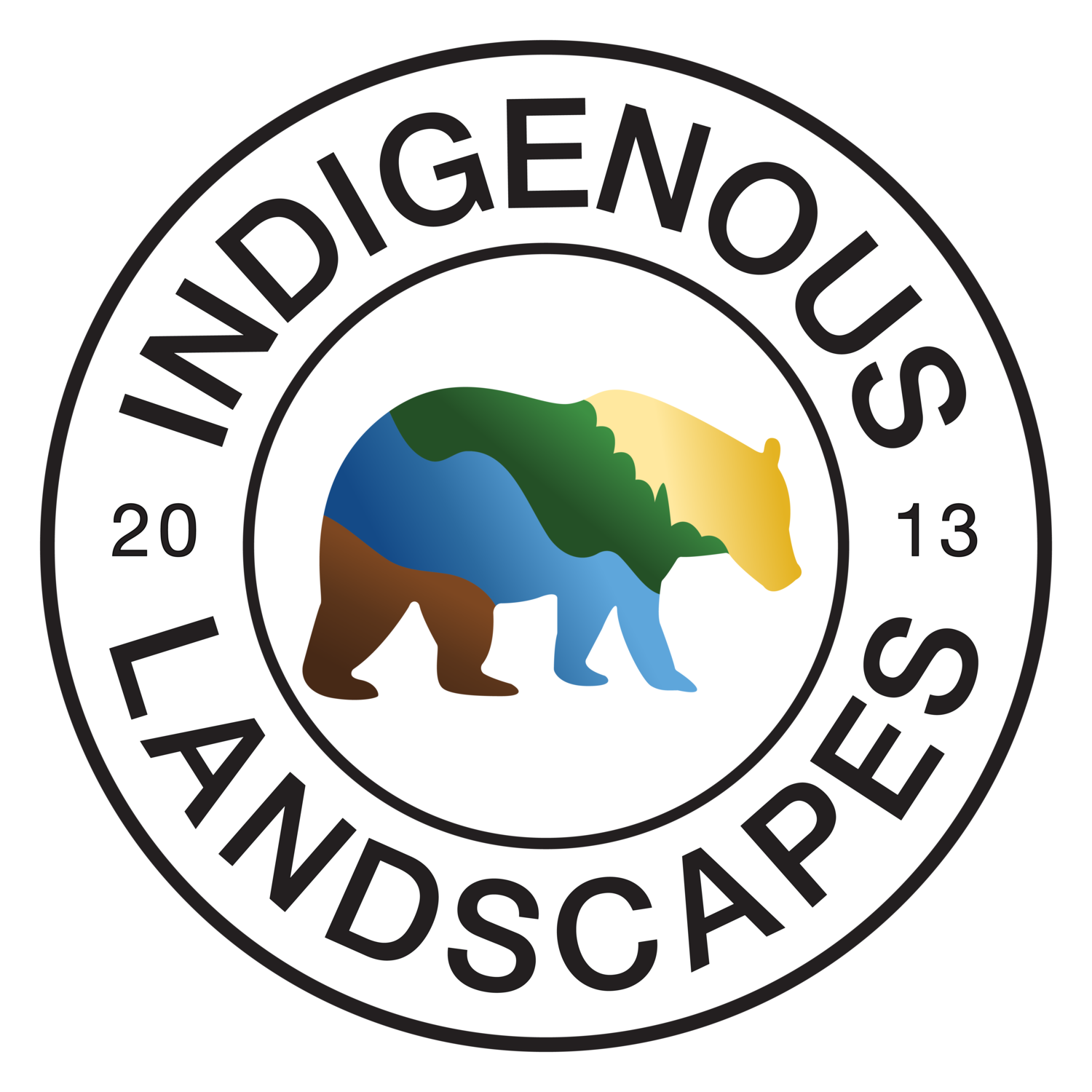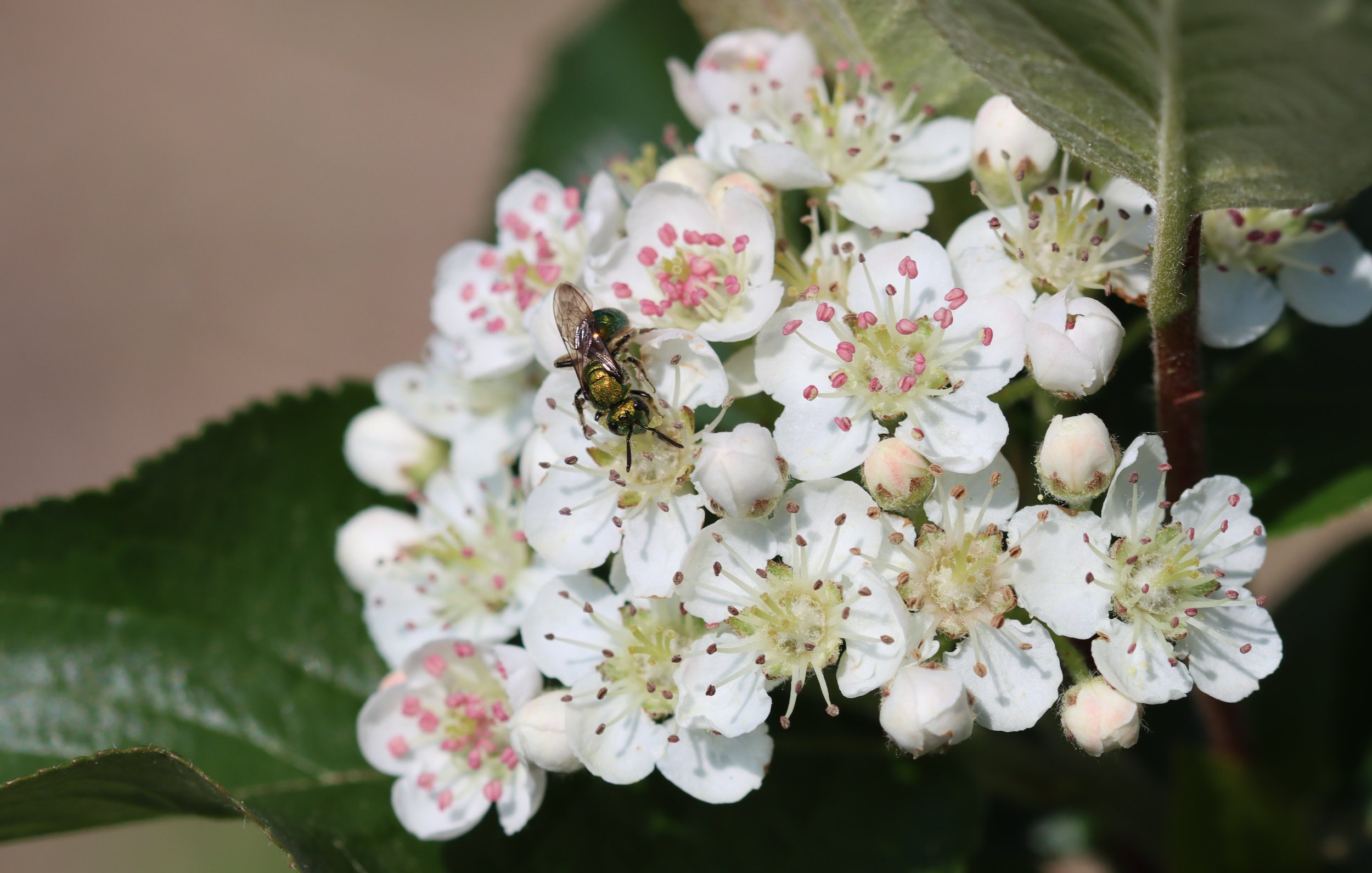Aronia melanocarpa - Black Aronia - Chokeberry attracting small, solitary native bees.
If viewing on a Cell Phone, turn the phone sideways for better orientation of article and pictures. If the article isn’t displaying well, it will display properly on a laptop, tablet, or desktop computer.
Black Aronia aka Black Chokeberry (Aronia Melanocarpa) - this native thicket species ranges from 4 feet to 10 feet tall depending on soil/climate/average rainfall. Because it blooms in mid-spring it supplies early emerging native bees as well as feeding Queen Bumblebees as they raise their first set of Worker Bees who are in their larvae stage. Because the fruit doesn't taste amazing, I refer to it as a medicinal fruit for humans or wildlife food. The medicinal effects of Aronia for humans are well scientifically documented. The nearly off the chart levels of anti-oxidants and other phytochmeicals (chemicals produced by plants) have shown to have positive effects on blood sugar levels, blood pressure, anti/preventative-cancer effects, Anti-inflammatory effects and more. In my household, I've gotten my spouse to use a tablespoon of Aronia fruit powder in their smoothies 5 days a week which has decreased their plantar fasciitis pain by 90% and slowed progressing eczema symptoms. Google the science of Aronia berries for more info! P.S. the fruit are also beloved by native birds and native mammals.
For the Pictures Above: Select/click the images above to expand them then click/tap to advance to the next picture. Also, Turn your cellphone side ways for horizontal pictures.
For the Pictures Above: Select/click the images above to expand them then click/tap to advance to the next picture. Also, Turn your cellphone side ways for horizontal pictures, and straight up and down for vertical pictures.
Golden Alexander and Heart-Leaf Alexander (Zizia species) - these early blooming native wildflowers of the carrot family start out as small plants, but their ambition withholds a bright future in gardens, broken forests, savannas, and meadows. In native meadow's we've created ourselves, we've observed Golden Alexander increasing year by year, but not in an invasive manner. They reseed effectively and hold their ground well against most prairie/meadow plant. The early blooming attracts mostly small spring emerging native bees. Both Golden Alexanders have moderate grazing resistance to Deer and Rabbits. Heart-Leaf Alexander has higher shade tolerance than Golden Alexander, as it can be found in the dappled sunlight of broken canopy woodlands. Though Golden Alexander’s shade tolerance is not easily out down as it can persist in partially shaded Savanna environments. Golden Alexander has a higher wet soil tolerance than Heart-Leaf Alexander while Heart-Leaf has a higher dry soil tolerance than Golden Alexander though both are very adaptable to gardens. Caterpillars of the butterflies Black Swallowtail (Papilio polyxenes asterius) and Ozark Swallowtail (Papilio joanae ) feed on the leaves.
Flowering Dogwood (Cornus florida) - Flowering Dogwoods are one of the more well known native plants and are fairly available in the nursery industry throughout its native range. If the cultivars are the only ones available to you, then choose two different cultivars so that they can cross pollinate successfully to bear the high quality fruit which ripens in the fall and is a favorite for wildlife. Flowering Dogwoods bloom soon after Eastern Redbuds and Native Plums bloom. Naturally they would occur in forest canopy openings, broken/open woodlands, savanna thickets, and Eastern prairie thickets. In modern times the most common naturally occurring populations are found on edges of woods, but due to the uprising of invasive shrubs and invasive vines colonizing wood edges this niche is becoming less and less viable for Flowering Dogwood and other native thicket species. In the residential landscape, they grow well in full-sun within soil in neighborhoods at least 30 to 40 years in age. Newer developed neighborhoods have more recently disturbed soils that haven't had time to recover, and Flowering Dogwoods may struggle in those poor soil conditions. If planting in newer neighborhoods, choose to plant them on the Eastern or Western side of a building such as a detached garage or home. This will give them a part day's worth of sun which will benefit their health. In neighborhoods over 30 years in age, they'll likely thrive in full-sun within their native range and especially if during historically bad droughts they are given a couple of inches of water every 10 days or so.
This article is only available here at Indigescapes.com, not Facebook. To make sure you don’t miss our website articles like this one, sign up for our email list at the bottom of this webpage and you’ll receive these free educational Native Plant articles weekly through email.
To fast track your Native Plant Restoration knowledge, consider one of our native plant educational books here: Indigescapes.com/Ourbooks - the shipping is cheaper if all 3 books are purchased in one order as opposed to separate orders.
















